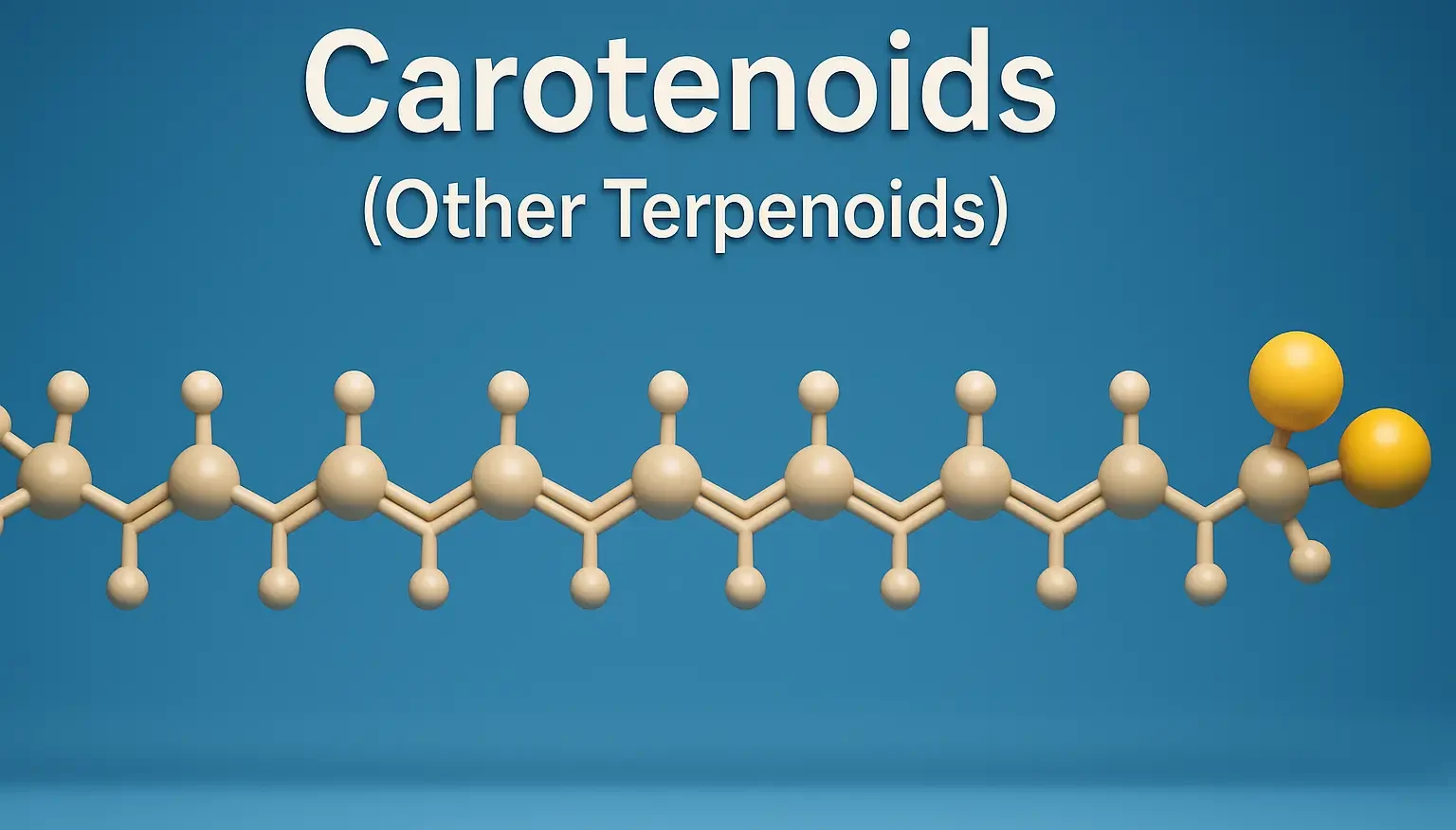General Introduction to Carotenoids (Other Terpenoids):
- Carotenoids are tetraterpenoids responsible for the yellow, orange, and red colors in plants.
- They are precursors of vitamin A and have antioxidant properties.
Synonyms:
- Common name: Carotenoids
- Examples: Beta-carotene, Lycopene, Lutein
Biological Source:
- Found in carrots (Daucus carota), tomatoes (Solanum lycopersicum), and marigold flowers (Tagetes erecta).
Family:
- Varies depending on the plant source:
- Apiaceae (Carrot)
- Solanaceae (Tomato)
- Asteraceae (Marigold)
Advertisements
Composition:
- Major carotenoids:
- Beta-carotene
- Lycopene
- Lutein
Chemistry & Chemical Classes:
- Chemical Class: Tetraterpenoids (C40 compounds).
- Structure:
- Carotenoids are long-chain polyenes with conjugated double bonds, which give them their color.
Therapeutic Uses of Carotenoids (Other Terpenoids):
- Vitamin A precursor: Beta-carotene is converted to vitamin A in the body.
- Antioxidant: Protects against oxidative damage.
- Eye health: Lutein and zeaxanthin protect against macular degeneration.
Commercial Applications of Carotenoids (Other Terpenoids):
- Used as food colorants, dietary supplements, and in cosmetics for their antioxidant properties.
Click Here to Watch the Best Pharma Videos
Advertisements

